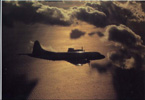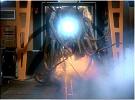ChezDaJez
Posts: 3436
Joined: 11/12/2004
From: Chehalis, WA
Status: offline

|
Not replying to you, Charles, just to the thread in general...
From the United States Strategic Bombing Survey (USSBS) conducted after the war:
quote:
ELIMINATION OF JAPANESE CONVENTIONAL AIR POWER
Japanese production of aircraft of all types rose from an average of 642 planes per month during the first 9 months of the war to a peak of 2,572 planes per month in September 1944. The rise was particularly great during 1943, after the Japanese had learned the lessons of the 1942 campaigns. Aggregate production during the war was 65,300 planes.
Japanese army and navy plane losses from all causes, both combat and noncombat, rose from an average rate of some 500 planes per month in the early months of the war to over 2,000 per month in the latter months of 1944. Aggregate losses during the course of the war were of the order of magnitude of 50,000 planes, of which something less than 40 percent were combat losses, and something over 60 percent were training, ferrying, and other noncombat losses.
The Japanese were thus able to increase the numerical strength of their air forces in planes, in almost every month of the war. Numerical strength increased from 2,625 tactical planes at the outbreak of the war to 5,000 tactical planes, plus 5,400 Kamikaze planes, at the time of surrender.
Aggregate flying personnel increased from approximately 12,000 at the outbreak of the war to over 35,000 at the time of surrender.
United States aircraft production and pilot training exceeded the Japanese totals by wide margins, but only a portion of this strength could be deployed to the Pacific. United States first line strength in the Pacific west of Pearl Harbor increased from some 200 planes in 1941 to 11,000 planes in August 1945. It was not until late 1943 that we attained numerical superiority over the Japanese air forces in the field. Even in 1942, however, the relatively few United States air units in the Pacific were able to inflict greater losses than they sustained on the numerically superior Japanese. Aggregate United States plane losses during the course of the Pacific war, not including training losses in the United States, were approximately 27,000 planes. Of these losses 8,700 were on combat missions; the remainder were training, ferrying and other noncombat losses. Of the combat losses over 60 percent were to antiaircraft fire.
As previously stated, Japanese pilots at the outbreak of the war were well trained. The average Army pilot had some 500 hours before entering combat and Navy pilots 650 hours. These experienced pilots were largely expended during the bitter campaigns of the opening year and a half of the war. The Japanese paid far less attention than we did to the protection, husbanding and replacement of their trained pilots, and were seriously hampered in their training program by a growing shortage of aviation gasoline. Average flying experience fell off throughout the war, and was just over 100 hours, as contrasted to 600 hours for United States pilots, at the time of surrender. Inadequately trained pilots were no match for the skilled pilots developed by the United States.
At the time of the initial Japanese attack, Japanese fighter planes, although less sturdily built, more vulnerable and weaker in fire power than the United States fighters, had certain flight characteristics superior to those of United States fighters then available in the Pacific. The Japanese improved the quality of their planes during the war, greatly increased the power of their aircraft engines, ultimately exceeded United States fighters in fire power and had first-class aircraft in the design and experimental stage at the end of the war. They lacked, however, the widespread technical and industrial skill to match the United States in quantity production of reliable planes with increased range, performance and durability. After the initial campaigns, the United States always enjoyed superiority in the over-all performance of its planes. By American standards, the Japanese never
--------------------------------------------------------------------------------
Page 10
fully appreciated the importance of adequate maintenance, logistic support, communications and control, and air fields and bases adequately prepared to handle large numbers of planes. As a result, they were unable to concentrate any large percentage of their air strength at any one time or place. Neither did they appear to have the ability to control large formations in the air with any degree of efficiency.
Local air control and its tactical exploitation the Japanese understood and achieved in their early offensives.
But along with all other military powers prior to the war, the Japanese had failed fully to appreciate the strategic revolution brought about by the increased capabilities of air power. The ability to achieve general and continuing control of the air was not envisaged as a requirement in their basic war strategy, as was the planned destruction of the United States Fleet. Had this basic requirement been well understood it is difficult to conceive that they would have undertaken a war of limited objectives in the first place. Once started on a strategic plan which did not provide the means to assure continuing air control, there was no way in which they could revise their strategy to reverse the growing predominance in the air of a basically stronger opponent who came to understand this requirement and whose war was being fought accordingly.
CONVERSION OF JAPANESE AIR FORCES TO KAMIKAZE FORCES
By the summer of 1944, it had become evident to the Japanese air commanders that there was no way in which they could equal the United States air arms at any point. Their losses were catastrophic, while the results which they were achieving were negligible. The one and only asset which they still possessed was the willingness of their pilots to meet certain death. Under these circumstances, they developed the Kamikaze technique. A pilot who was prepared to fly his plane directly into a ship would require but little skill to hit his target, provided he got through the intervening screen of enemy fighters and antiaircraft fire. If sufficient Japanese planes attacked simultaneously, it would be impossible to prevent a certain proportion from getting through. Even though losses would be 100 percent of the planes and pilots thus committed, results, instead of being negligible, might be sufficient to cause damage beyond that which we would be willing to endure.
From October, 1944, to the end of the Okinawa campaign, the Japanese flew 2,550 Kamikaze missions, of which 475, or 18.6 percent were effective in securing hits or damaging near misses. Warships of all types were damaged, including 12 aircraft carriers, 15 battleships, and 16 light and escort carriers. However, no ship larger than an escort carrier was sunk. Approximately 45 vessels were sunk, the bulk of which were destroyers. The Japanese were misled by their own inflated claims of heavy ships sunk, and ignored the advice of their technicians that a heavier explosive head was required to sink large ships. To the United States the losses actually sustained were serious, and caused great concern. Two thousand B-29 sorties were diverted from direct attacks on Japanese cities and industries to striking Kamikaze air fields in Kyushu. Had the Japanese been able to sustain an attack of greater power and concentration they might have been able to cause us to withdraw or to revise our strategic plans.
At the time of surrender, the Japanese had more than 9,000 planes in the home islands available for Kamikaze attack, and more than 5,000 had already been specially fitted for suicide attack to resist our planned invasion.
Note: Bold type is mine. Read into this what you will but its pretty clear that Japan had a substantial pool of aircraft available in the Home Islands at the time of surrender. This does not include any aircraft remaining in China, Malaya, the SRA or at bypassed bases.
It can be argued that many of these were trainers and not "first line" aircraft but the definition of what constitutes a "first line" aircraft is conveniently vague. Obviously a trainer aircraft or Anns and Sonias are rightfully considered non-first line aircraft but what of the others? Personally, I wouldn't consider the Zero a "first line" aircraft in 1945. hpwever, others might.
Here's the link to read all of the USSBS: USSBS
Chez
_____________________________
Ret Navy AWCS (1972-1998)
VP-5, Jacksonville, Fl 1973-78
ASW Ops Center, Rota, Spain 1978-81
VP-40, Mt View, Ca 1981-87
Patrol Wing 10, Mt View, CA 1987-90
ASW Ops Center, Adak, Ak 1990-92
NRD Seattle 1992-96
VP-46, Whidbey Isl, Wa 1996-98
|
 Printable Version
Printable Version







 .
.


 ).
). 





 New Messages
New Messages No New Messages
No New Messages Hot Topic w/ New Messages
Hot Topic w/ New Messages Hot Topic w/o New Messages
Hot Topic w/o New Messages Locked w/ New Messages
Locked w/ New Messages Locked w/o New Messages
Locked w/o New Messages Post New Thread
Post New Thread